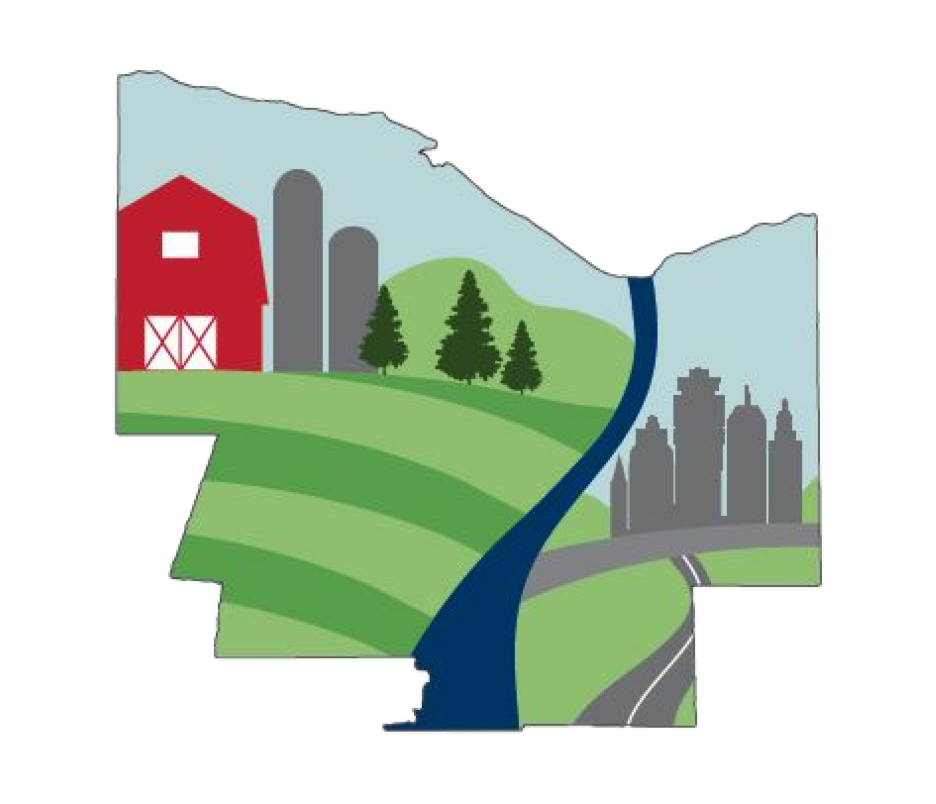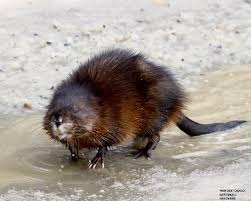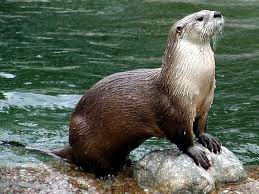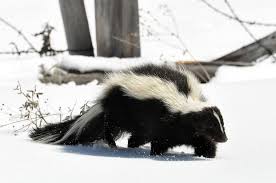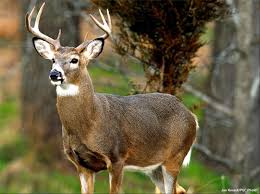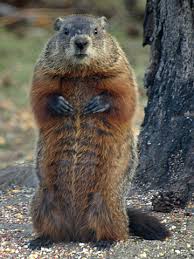Mammals of New York
Beaver (Castor )
The official state mammal of NY state, the beaver is a large aquatic animal that is a seemingly tireless worker, building mud and stick dams and lodges on waters across the state. The state’s largest rodent, adult beaver average 3-3.5’ long and 30-50 pounds. They eat soft, aquatic vegetation and the twigs and bark of trees, especially poplar. When disturbed, they will slap their large, flat tail on the water’s surface. Each year females give birth to one litter of 1-8 kits (average is 3-4). While beaver dams create ponds that provide a home to many birds and animals, such beaver activity can be a nuisance and cause damage such as flooded roads and the loss of valued timber.
Black Bear (Ursus americanus)
NY’s only bear species, the black bear occurs in mature forests scattered across the state. Adults average 2.5 to 3’ tall at the shoulder and weigh 200 pounds, with some individuals reaching more than 600 pounds. Feeds on all manner of plants (fruits, seeds, nuts, berries, grasses) and animal materials (insects, fish, meat, honey). Spends winter in a den. Every other winter, denning females give birth to 1-4 cubs (average = 2). Cubs stay with their mother until about 1.5 years of age.
Bobcat (Lynx rufus)
Similar in appearance to a very large house cat, the bobcat is found in much of New York State, except on Long Island and parts of central and western NY. The bobcat prefers forests, small wooded swamps and rocky outcrops. Bobcats have black spotted tails with a white tip, and short ear tassels. Adult males average 28 pounds in weight and measure up to 22” tall at the shoulder. They eat a variety of animals from mice to deer, blue jays to wild turkeys. During winter, bobcats prefer to keep out of deep snows and often travel along rock ledges and on fallen trees and logs. Females give birth to 2-3 kittens each spring.
Chipmunk (Tamias striatus)
A sprightly, tiny squirrel with a “bottlebrush” tail, the chipmunk is a common sight in woodlands and suburban backyards. Weighing just 3-4 ounces, this small mammal is equally adept at scampering up a tree, burrowing in the ground or panhandling snacks at camps or bird feeders. It feeds on seeds, nuts, insects and flowerbed bulbs, often filling its cheek pouches and carrying the food to an underground den where it spends the winter. In early spring, females have one litter of 4-5 young.
Coyote (Canis latrans)
Uncommon 40 years ago in NY, the coyote is now found almost everywhere in the state except on Long Island. These dog-like animals are highly variable in color, from strawberry blond to nearly all black, with some looking quite wolf like. Coyotes in suburbia are not unusual, but farmland and woods are more likely habitats. About 20-50 pounds in weight and 4’ long, the coyote is capable of killing deer or smaller domestic animals, but they usually eat rabbits, rodents, carrion, fruit, birds or insects. Coyotes may den in a ground burrow where a litter of 5-10 pups is born each spring.
Eastern Cottontail Rabbit (Sylvilagus floridanus)
The Eastern cottontail rabbit is one of NY’s most common farm and woodland-edge mammals. A popular game species and prey for many predators, its numbers vary considerably around the state. Adults weigh 2.5-3 pounds. They eat tender green vegetation, garden produce, bark and buds of trees, vines and shrubs. They nest in grassy fields, under bushes, briars, on lawns or in flower beds. Highly prolific, females produce two to three or more litters of 4-8 young per year.
Gray Squirrel (Sciurus carolinensis)
A very common woodland, suburban and urban species, the gray squirrel is the most readily recognized of New York’s mammals, and a frequent visitor at backyard bird feeders. Adults weigh about 1 pound and feed on nuts, seeds and other plant material. They build nests constructed of a bulky collection of leaves fairly high in trees, or they may den in tree cavities and buildings. Females have two litters of 2-4 young per year. The black squirrel is a color variation of the gray squirrel.
Little Brown Bat (Myotis lucifugus)
Once the most common of NY’s nine species of bats before the appearance of white nose syndrome in 2006. Since then, populations declined by around 87%. The little brown bat can be seen flying through the last glow of sunset. A small mammal, its 3.5’ body weighs just slightly more than a quarter ounce; its wingspan measures 8”. The little brown bat eats flying insects generally about the size of a mosquito. This bat has a big appetite, with pregnant and nursing females consuming nearly one half of their body weight in insects per night. Males and young eat less. Females produce one young per year. Hibernates in caves and abandoned mines during winter.
Muskrat (Ondatra zibethicus)
Often mistaken for a beaver or large rat, this very common aquatic animal can be distinguished by its long, vertically flattened tail. Actually a giant “mouse” closely related to meadow voles and lemmings, adult muskrats average 2’ in length and 1-3 pounds in weight. They burrow into stream and pond banks to build dens, and construct food caches (“houses” or “lodges”) of cattail stems and roots, reeds, rushes and grasses for use during the winter. Females produce 2-4 litters of 2-5 kits per year.
Opossum (Didelphis virginiana)
While 50 years ago this southern animal was seldom found this far north, the opossum is now common throughout most of NY state. Adults grow to be 2-2.5’ long and 3-10 pounds in weight. The long, bare, prehensile tail is used for climbing, but causes many people to mistake this animal for a large, gray rat. Opossums eat a wide variety of fruits, berries, insects and garbage. Females produce one litter of about 9 young per year. Female opossums are the only mammal in North America that carry their young in a pouch.
Raccoon (Procyon lotor)
A common mammal across NY, the raccoon is easily recognized by its familiar “masked” face and bushy ringed tail. Adults grow to be about 2.5’ in length and up to 30 pounds in weight. While they will eat almost anything, including garden produce and garbage, in the wild raccoons eat fruits, insects and a variety of aquatic animals. They will catch crayfish, frogs and other water life by probing with their front paws in the water and then manipulating the catch in a “washing “ action. Raccoons den in hollow trees, burrows, rock ledges and buildings. Females produce on litter of 3-7 cubs per year. While cute, raccoons can be a nuisance around houses and carry diseases such as rabies.
Red Fox (Vulpes vulpes)
Equally at home in farm fields and woodlots, the red fox is widely distributed in NY. Prized by some for its thick, lustrous late autumn fur, the red fox has many color variations, including yellowish-red, black and silver. Adults average 3’ in length and 10 pounds in weight. They are champion mouse-catchers, but also eat other small rodents, birds, insects and fruits. Females produce one litter of 5-6 kits per year in underground dens.
River Otter (Lutra canadensis)
A large, semi-aquatic weasel, the river otter is a graceful swimmer and excellent fisherman that lives near bodies of water. It appears to enjoy life immensely and frequently slides on snow and mud into the water. Adults grow to be 3-4’ long and 6-25 pounds, and eat fish, crayfish and other aquatic animals. Each year, females produce on litter of 1-4 young usually in underground dens. Not common in NY, the otter is now being restored to many former habitats across the state. Seeing one is a rare treat.
Skunk (Mephitis mephitis)
Well-known by its distinctive black and white fur, and for the pungent odor it releases when threatened, the skunk is a member of the weasel family. Adults average 2.5’ long and 10 pounds in weight. Semi-nocturnal animals, skunks feed mostly at night on insects and small rodents, often along roadsides and in suburban yards. Each spring, females produce one litter of 4-8 kits, usually in an underground den.
White-tailed Deer (Odocoileus virginianus)
NY’s most popular game mammal and a favorite of wildlife watchers, the white-tailed deer gets its name from the bright white underside of its tail, which it raises as it bounds off. Large animals, adults measure 3-3.5’ tall at the shoulder. Bucks may weigh as much as 300 pounds, but most average about half of that. Male white-tailed deer have antlers which are annually shed; females rarely have antlers. Eats leaves, twigs, vines, herbs, grasses, fruits, acorns, farm crops, garden produce and lawn shrubbery. Females usually have 1-2 fawns per year in the spring. Young are reddish with white spots. In certain areas of NY, this deer can be a farm nuisance and a highway hazard.
Woodchuck (Marmota monax)
A farm field and roadside resident, the woodchuck is a very large, squat squirrel that can survive deep in the woods. Adults grow to be about 2 feet long and 10-12 pounds in weight. They feed on farm crops, grasses, herbs and garden produce. They prefer to hibernate for the winter in a burrow located inside a forest edge. Each spring, females produce one litter of four young. Woodchuck holes in farm fields can be a hazard to livestock.
Porcupine (Erethizon dorsatum)
Unmistakable with their large, sharp quills, the porcupine is a resident of mixed forests, specializing in eating the inner bark of trees, especially in winter (porcupines do not hibernate).
Adults are typically 2-3.5 ft long and weigh 10-20 lbs. Dens have been found in hollow trees and logs, under large rocks or root systems, in caves, and in abandoned buildings.
Porcupine only have one young per season. Excellent climbers and branch claspers, porcupines use their tail and hind limbs to hold themselves on branches while they stretch with their fore limbs to gather food. Mostly active at night, the porcupine cannot shoot its quills but thrusts itself towards predators when threatened.
